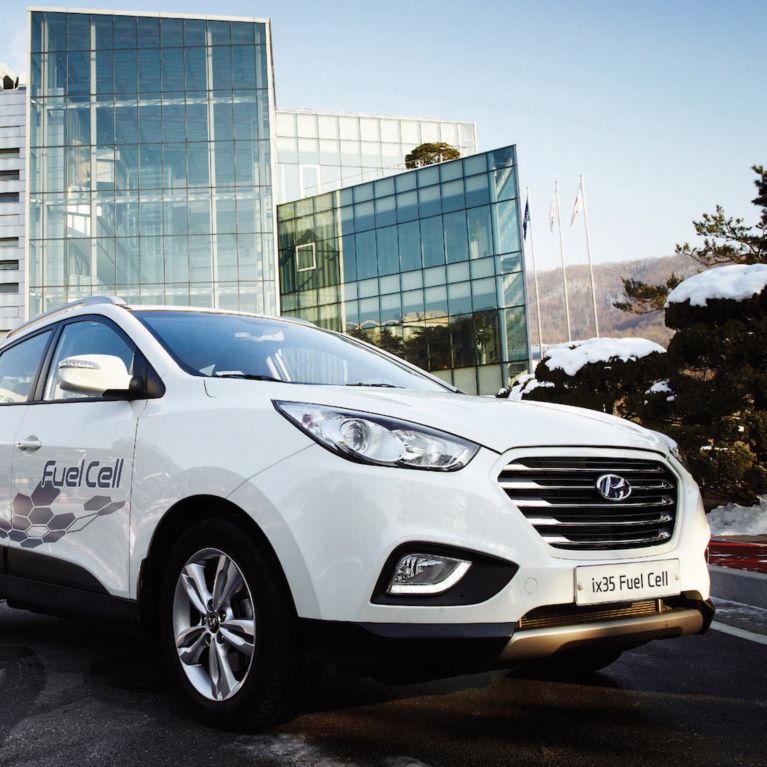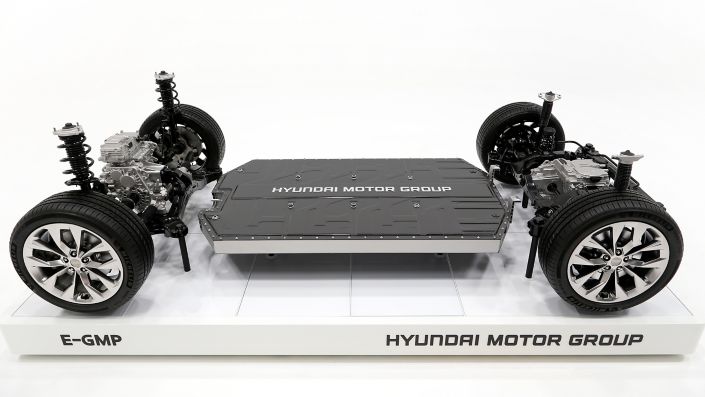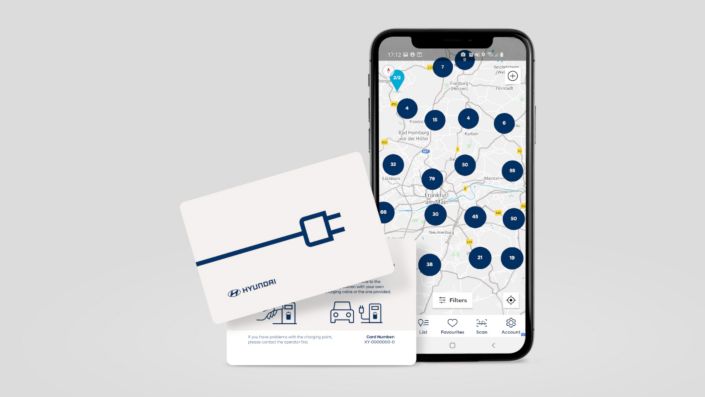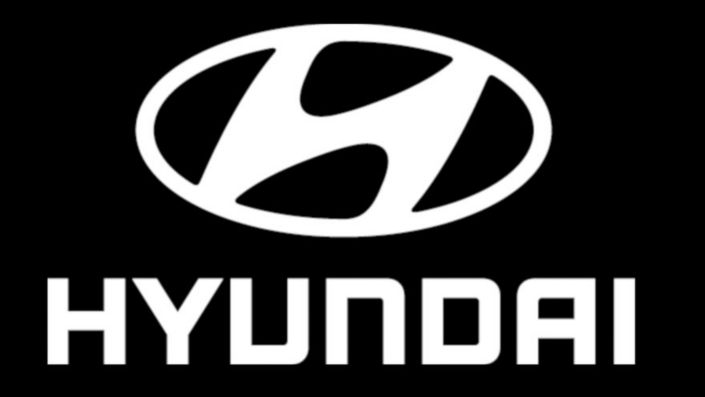We recently handed keys to a Hyundai ix35 Fuel Cell to our Hamburg-based blogger David for the weekend. The green German city has four hydrogen filling stations, with another due to open next year.
What kind of car is the ix35 Fuel Cell?
The Hyundai ix35 Fuel Cell is the world's first mass-produced fuel cell electric vehicle. Hyundai started researching hydrogen fuel cells as a viable powertrain back in 1998 and produced its first prototype in 2001, which was based on the Santa Fe. It’s fair to say the 2001 concept was quite basic: it had a 75 kW fuel cell, a 72-litre gas tank, a top speed of just 124 km/h and a range of around 160 km. The current ix35 Fuel Cell model had been in production since 2013. It has an output of 100 kW and its tank contains 5.64 kg of hydrogen, which lasts for a range of almost 600 km. The energy is stored in a 24 kWh lithium-ion polymer battery.
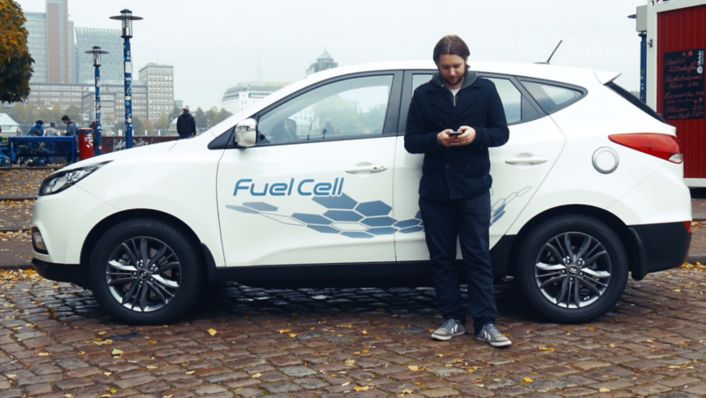
Refuelling the ix35 Fuel Cell
I was a bit apprehensive before driving the ix35 Fuel Cell for the first time. Having only previously driven petrol-fuelled cars, I was aware of the limited number of hydrogen filling stations in Hamburg, and the fact there are just 24 in Germany in total, mostly in metropolitan areas. I didn’t want to be “caught short” too far away from one of them when it was due for refuelling. Thankfully, both the Hyundai Fuel Cell App for iOS and Android and the car’s in-built satellite navigation system has the addresses of each hydrogen filling station saved, so I could be rest assured that within the city limits, I’ll never be too far away.
To begin the weekend, I headed to the hydrogen filling station at Hamburg’s HafenCity, using directions from the App. This is a very scenic part of Hamburg, with picturesque views of the redbrick former warehouses and the recently-completed Elbphilharmonie opera house, as well as the winding River Elbe. Refuelling is a simple process, and should take no more than five minutes.
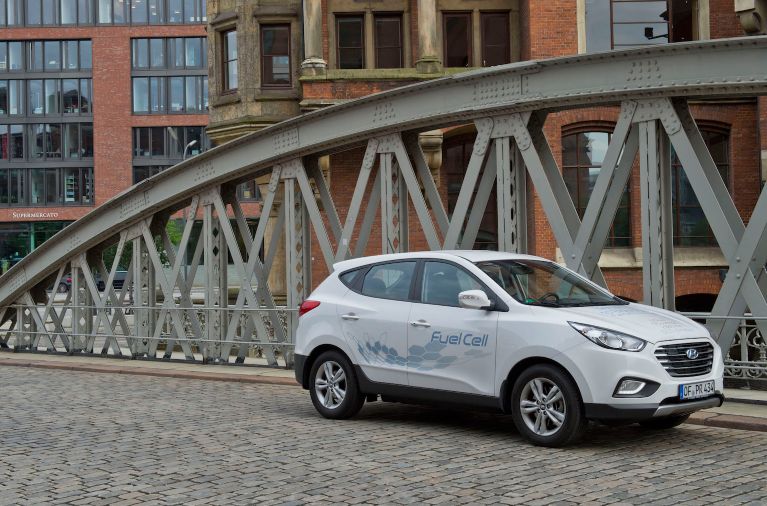
All owners of a Fuel Cell vehicle have a card that is used to pay for the hydrogen. When I arrived at the HafenCity filling station, I placed my card in the machine and selected a pump. Then I placed the holding valve onto the car’s nozzle and locked it in place, before pressing the green start button to let the refuelling begin. After two minutes, the car tank was full and good to go.
There are three main components in a Fuel Cell. The Proton Exchange Membrane lets protons pass through but not electrons. The anode and cathode are defined by the flow of current, which refers to any movement of electrical charge, and allows electrons to flow in and out of the fuel cell. To start the reaction, hydrogen is directed into the anode. In the cathode, the electrons are reunited with the protons and mix with oxygen from the air. This creates just heat and water vapour, meaning the only emission is water. Multiple fuel cells are combined into a fuel cell stack to magnify this reaction to produce more energy for greater power and longer range. Electricity generated from the fuel cell stack is first transmitted to the inverter and then to the motor, propelling the vehicle.
The first thing you notice when you get behind the wheel of the ix35 Fuel Cell is how quiet the car is. Despite the fact it’s based on the Hyundai ix35 and therefore built like an SUV, this is a 100 per cent, environmentally-friendly vehicle that emits zero CO₂ emissions and it is virtually silent while driving.
How Fuel Cell technology works
There are three main components in a Fuel Cell. The Proton Exchange Membrane lets protons pass through but not electrons. The anode and cathode are defined by the flow of current, which refers to any movement of electrical charge, and allows electrons to flow in and out of the fuel cell. To start the reaction, hydrogen is directed into the anode. In the cathode, the electrons are reunited with the protons and mix with oxygen from the air. This creates just heat and water vapour, meaning the only emission is water. Multiple fuel cells are combined into a fuel cell stack to magnify this reaction to produce more energy for greater power and longer range. Electricity generated from the fuel cell stack is first transmitted to the inverter and then to the motor, propelling the vehicle.
The first thing you notice when you get behind the wheel of the ix35 Fuel Cell is how quiet the car is. Despite the fact it’s based on the Hyundai ix35 and therefore built like an SUV, this is a 100 per cent, environmentally-friendly vehicle that emits zero CO₂ emissions and it is virtually silent while driving.
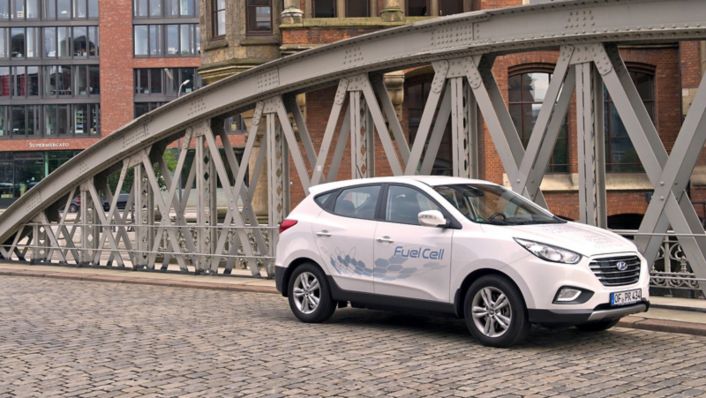
The ix35 Fuel Cell is perfect for navigating around busy city districts, too. Over the course of the weekend, I drove the car to the supermarket for my weekly food shop, and its spacious interior ensured there was plenty of room to pack all my purchases in the boot. I also visited friends across the other side of the city and was impressed by how quick the car travels, as well as its active safety features - particularly its rear-view camera to assist with reversing and parking.
It’s not just a city car, either. With a range of 600 km, I could have driven across Germany to places as far from Hamburg as Amsterdam, Copenhagen or Cologne on a full tank. With plans afoot for 400 hydrogen filling stations to be installed in Germany by 2023, ix35 Fuel Cell owners will be able to regularly drive long distances without worrying about where they will next refuel, or their carbon footprint.
It’s not just a city car, either. With a range of 600 km, I could have driven across Germany to places as far from Hamburg as Amsterdam, Copenhagen or Cologne on a full tank. With plans afoot for 400 hydrogen filling stations to be installed in Germany by 2023, ix35 Fuel Cell owners will be able to regularly drive long distances without worrying about where they will next refuel, or their carbon footprint.

